Windows Phone 8.1 Review
by Anand Lal Shimpi on April 14, 2014 10:00 PM EST- Posted in
- Smartphones
- Microsoft
- Mobile
- windows phone
- Windows Phone 8.1
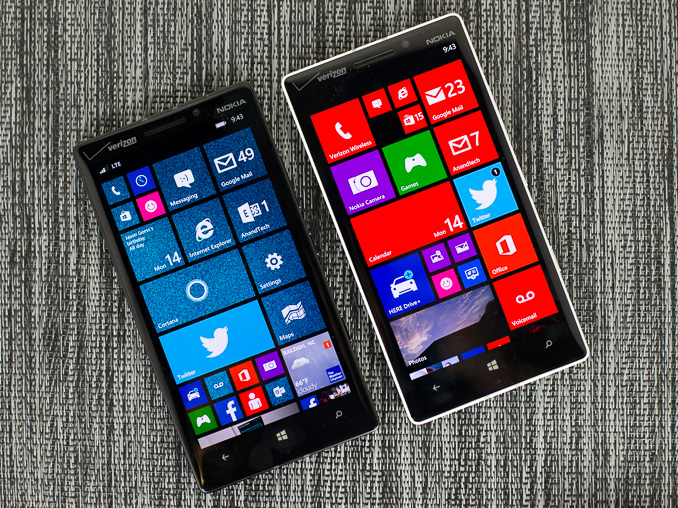
I was an early fan of Windows Phone 7. I remember completely switching over to the platform for about a month back in 2010, and being relatively happy. It wasn’t until I needed tethering support (which didn’t exist in the first release of WP7) that I had to move away. Unfortunately, Microsoft’s software and hardware update cadence for Windows Phone couldn’t pull me back.
In its first three years of existence, Windows Phone received roughly the same number of major updates as Android and iOS. From 2010 - 2013, Google took Android from Gingerbread to KitKat, Apple revved iOS from version 4 to 7, and Microsoft gave us Windows Phone 7, 7.5 and 8.0. At best, you can consider the software release cadence competitive. At worst, it’s not enough. Windows Phone started behind both Android and iOS. To come out ahead, Windows Phone updates had to be more substantive, more frequent or both.
The same could be said about hardware. Microsoft lagged behind Apple and Google to dual-core, 28/32nm silicon, higher resolution displays, and LTE support among other things. Although the situation has improved over the past year, if the goal is to take the #1 or #2 spot, the upgrade cadence needs to be more aggressive.
It always felt like the point of Windows Phone was to be a midpoint between the flexibility of Android and iOS’ guarantee of a certain level of user experience. The platform was born during a time when Android was not yet ready for the mainstream (Gingerbread) as an iOS alternative, and when it still looked like the Windows licensing model would work for handset OEMs.
Today the world is a different place. Android is far more mature than it was in 2010, and it’s polished enough where it can easily be a solution for the enthusiast as well as the first time smartphone user. While Microsoft’s strategy in 2010 might have been one of eyeing the crown, in 2014 the strategy is more humble and focused.
Improve the platform, address issues both little and big, and continue to grow. That’s the mantra these days and today we see it put in action with the arrival of Windows Phone 8.1, the fourth major release of the platform since its arrival in 2010.
I’ve spent the past few days using a Nokia Lumia Icon with the Windows Phone 8.1 developer preview (software available today). All devices capable of running Windows Phone 8 will be getting the 8.1 update for free over the next couple of months. Any new hardware vendors looking to ship Windows Phone 8.1 will be able to do so without paying Microsoft any licensing fees for the software itself.
Although the biggest change to Windows Phone 8.1 happens to be at the API level (including support for universal apps that can run on PCs, tablets and phones), there are a number of user facing feature enhancements that are worth talking about. Microsoft’s reviewer’s guide for Windows Phone 8.1 clocks in at 239 pages, so there’s no way I’ll be able to get to everything here, but I’ll go through several of the highlights.
Start Screen Updates
With the GDR3 update to Windows Phone 8, Microsoft added support for a third column of medium sized tiles on 1080p devices with a large display. With Windows Phone 8.1, that flexibility comes to all devices.
The third column is pretty nice, although admittedly the Lumia Icon I was testing WP8.1 on already had it thanks to the WP8.0 GDR3 update. You can use the third column to either have an insane amount of tiles on the display at once or keep everything nice and spread out. Windows Phone ends up covering the broadest spectrum of information density on its home screen as a result.
The other big change to the start screen is you can now set a photo as a background, instead of being limited to just white/black. With a photo as your background, your live tiles become transparent and allow your background to show through. Tiles that have a colored logo (e.g. Xbox Games, Facebook app) as well as any hub tiles (e.g. People) remain opaque. Despite going through three major revisions of the OS, Windows Phone hasn’t really changed much visually since its introduction in 2010. The ability to personalize the start screen goes a long way in making the UI more interesting.
The multitasking UI gets a slight update as well in WP8.1. You still tap and hold the back button to activate the UI, but you can now quit out of apps by swiping down on the app’s card.
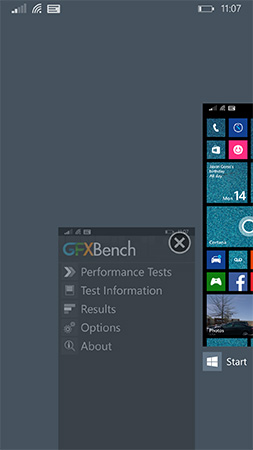
This is quite similar to what’s supported under iOS 7 (where it’s swipe up to quit). Unlike the iOS implementation however you can only swipe down one app at a time.
Revised System Specs
At the introduction of Windows Phone, Microsoft required that all OEMs have a physical camera button in addition to physical or capacitive buttons for back, home and search. It didn’t take long for Microsoft to remove the physical camera button requirement. With Windows Phone 8.1 the back/home/search buttons can be relocated on-screen, similar to what’s done on many Android handsets today. To accommodate those devices that inevitably ship without dedicated OS buttons, the screenshot button combination has changed from Power + Windows button to Power + Volume up.
The adjusted hardware requirements should make it easier for OEMs to take an existing Android hardware design and port it over to Windows Phone.
People Hub API, Disconnected Music+Videos Hub
When Windows Phone launched one of the major focal points was the People Hub, a single location for all of your contacts across all accounts/social networks. Previously you had to add accounts to Windows Phone in order for the People Hub to grab contacts from those accounts. With Windows Phone 8.1 Microsoft moves the People Hub from a push to a pull based service. If a 3rd party app supports it, all you need to do is login to the app itself and the People Hub will automatically pull in data from the app. Facebook is the best example of this as you no longer need to login to the Facebook app and then add your Facebook account separately to the People Hub. It’s a subtle change but one that echoes Microsoft’s new position on Windows Phone: rather than you conforming to Windows Phone, the OS should try and conform to you.
The other big hub change is the Music+Videos hub has been split up into two individual apps, each which can be updated independently of the OS.


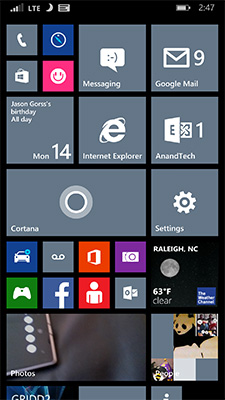
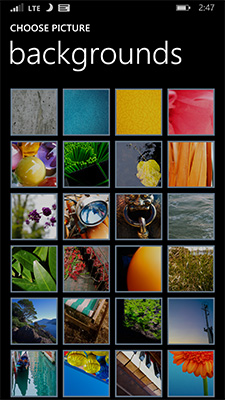

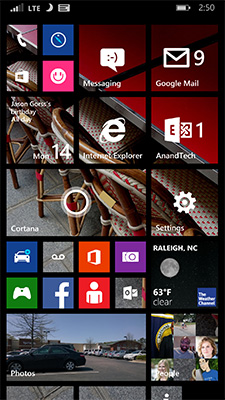
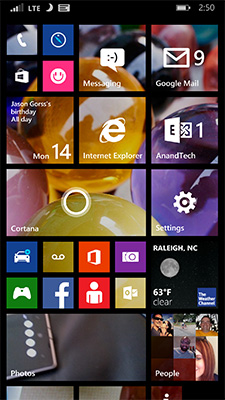
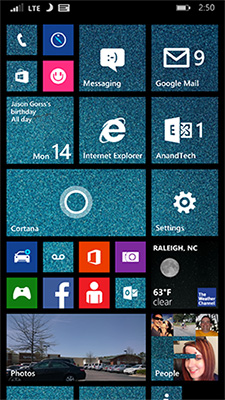
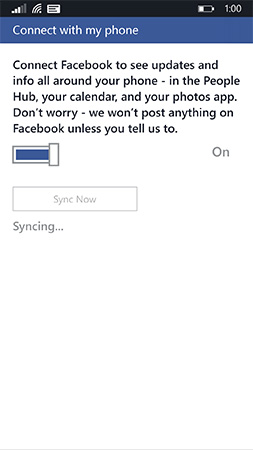








111 Comments
View All Comments
Imaginer - Tuesday, April 15, 2014 - link
It is gravy that the start tiles can have a user defined background that shows instead of a flat color, and thus when stepping back and looking at the Start screen, it indeed looks like looking through a window.(I see what you did there Microsoft).
But... having a background instead of a flat color, makes things very busy for me when I need to quickly spot my touch areas for pressing (because I am for sure do not have that tactile feeling to zero my fingers in on). I rather stick with the single color and white text and logo contrasts.
Snipeye - Tuesday, April 15, 2014 - link
Would like more details about the changes with the Music+Video. A major pain I'm dealing with is my old Zune120 died so I picked up a prepaid 520 as a replacement (with a 64GB microSD). To sync DRM songs from the Zune software, I have to install the Window Phone App on my computer (Win7) and enable Wi-Fi. The DRM doesn't transfer over when you sync music. Instead, the DRM is re-downloaded via WiFi by the phone when you have Wi-Fi or data service enabled. A very convoluted and hassling process; not clean compared to how my Zune120 synced to the Zune software.stimudent - Wednesday, April 16, 2014 - link
Only one person at work has a Windows phone. He's the only person I know with a Windows phone. It seems nice enough, but it doesn't seem that anyone is interested in it. Everyone else is way more interested in the other choices out there. It doesn't look like Microsoft Windows is being taken seriously in the smartphone market.BMNify - Wednesday, April 16, 2014 - link
Decent review for a person who was using windows phone after 3 years for just 2 weeks but you missed many things Anand, please refer Daniel Rubino's review for a more detailed review: http://www.wpcentral.com/windows-phone-81-reviewHopefully we will get much more detailed reviews in future for windows phones like Lumia Icon/930/1520.
BMNify - Wednesday, April 16, 2014 - link
Microsoft has already started accepting universal apps and they have even launched universal apps in windows phone store with apps like shazam and xbox games like:Hexic
MS Solitaire Collection
MS Mahjong
MS Minesweeper
Wordament
Halo: Spartan Assult
Skulls of the Shogun
So, just need to purchase once and then can play the game on Desktop, Laptop, Tablet and Phone :)
SirPerro - Wednesday, April 16, 2014 - link
So, summing up, Windows 8.1 is finally close (but not equal) to what Android and iOS offered last year, and both are going to be updated within a month or two? Well done Microsoft. Playing catch-up forever.Combine that with the fact that most apps (Apart from the ubiquitous whatsapp, instagram etc...) are not in windows phone, and most devs don't even care about it and you have a nice OS I'll never use in the short term.
Not to say that loads of chinese android phones are rushing to flood the market with entry level devices with kitkat in the following months, and that should be a much better option than an entry level lumia, so how about that for the main advantage of WP being entry level devices?
And I don't even want to comment about Nokia releasing entry level android devices now. That shows the power of WP as entry level OS at its best.
Lets be frank. WP is alive because microsoft is spending zillions on it, and most of the buyers are just unaware of the real options they have (I don't know a single person owning a WP which knew what he/she was buying)
hangfirew8 - Wednesday, April 16, 2014 - link
Yes, Microsoft is buying marketshare and playing catch-up, but that doesn't mean they are doomed to failure. The market has seen superior technology fail time and again against the mediocre. Existence of just one killer feature- like the amazing Lumia cameras- along with general competence in everything else, combined with good pricing (even if it is MS-subsidized), could see major market share falling to MS. The current Android/Apple duopoly is especially vulnerable in the low-end where currently free or near-free feature phones still rule. Once data plans come down more in price we may see feature phones basically disappear in favor of low-end smart phones, and this is their chance to grab up a big chunk of that market. As many of those buyers mature or grow wealthier, consumers may continue buying the same type of phone in the up-market.Max(IT) - Saturday, April 19, 2014 - link
Are you really comparing crappy cheap droids with any Lumia ? You clearly don't have a clue about what are you speaking about ....hangfirew8 - Tuesday, April 22, 2014 - link
No, I am not. My post was about price points and buying marketshare. Perhaps you meant to reply to someone else's post?HardwareDufus - Wednesday, April 16, 2014 - link
Anand,you missed two of the bigger features 8.1 offers.
VPN support and DUAL SIM. For those of us that use our phones for work, these are welcome additions (of course, Nokia needs to reléase a high end device (not 635) that supports DSDA).
Downloading the 8.1 DevPrev now... and will test VPN support immediately.